Researchers have come up with a metric to define distinctive innovation – and found it’s lacking. So why should developers push the boat out?
Innovate or die. Or so the saying goes. But is that really the mantra for European grocery? According to exclusive new research, commissioned by the British Brands Group (BBG) and carried out by Europanel, true innovation – or what researchers have dubbed ‘distinctive’ innovation – is actually pretty hard to find. In fact, of 18,167 launches analysed over a three-year period it examined, only 375 – or 2.1% – fit the criteria.
So, what’s going on? Well, innovation is fundamental to the strategies of most brands and retailers. For good reason, too. IRI data across the 40 leading fmcg brands in 2022 found a direct correlation between performance and levels of product development, for example, with 19% of sales coming from new products across the top five manufacturers versus just 8% overall.
That’s reflected in the approach of some of the sector’s biggest hitters. “Innovation sits at the heart of absolutely everything we do,” says Ian Morley, vice-president of sales at P&G Northern Europe, “from making improvements to our existing portfolio, through to leveraging partnerships to drive commercial innovation, and bringing entirely new products to market.”
Similarly Kerry Cavanaugh, business unit director at Mars Wrigley UK, insists: “We’re always balancing bringing innovation to our core brands, so we keep consumers excited to try new versions of their favourites, while also looking for areas where we can launch new products that are truly expanding the category.”
Much the same goes for smaller, challenger brands. At Heck, innovation was a way to disrupt a “sea of sameness” in the sausage category in 2013, explains co-founder Debbie Keeble. “The meat fixture appeared tired and lacking innovation and, in particular, the younger market – under-45s – seemed badly serviced and in need of something new and vibrant.” Its rollout of low-carb pork and lower-fat, gluten-free chicken sausages, both in brightly coloured packs, successfully attracted new customers as a result, she adds.
But, as BBG’s research demonstrates, critical though it is, the majority of innovation is about tweaking existing ranges rather than breaking new ground.
There’s no clear-cut line that separates distinctive from everyday innovation, of course. To overcome this, the team developed their own scoring system, with a two-stage approach to defining what should count as ‘distinctive’. First, they used the product name to indicate newness, assigning a closest match score out of 50. For example, the new Kellogg’s Corn Flakes 500g versus its closest existing match Kellogg’s Cornflakes 550g, scored only two. Coca-Cola Cinnamon one-litre versus its closest match Coca-Cola Life two-litre scored 36.
The Grocer’s New Product and Packaging Awards will take place in London on Friday 8 November. Entries are now open, and the entry deadline is Monday 17 June.
Then came the manual element. Products that scored below 30 were either skimmed over to check their name hadn’t failed to capture newness and was then categorised as everyday, or, where they also featured a new sub-brand, they were more closely examined. Those that scored higher than 30 were checked further, examining each product for unusual ingredients, flavours, benefits or being the ‘first of a kind’ in the category. So Walkers Pigs in Blankets flavour didn’t qualify as sufficiently distinctive, whereas Kettle’s Feta & Olive Tapenade Gluten Free did. The calculation was therefore a mix of “machine and people’s scrutiny”, says BBG director John Noble.
Using this method, some aspects of the findings were perhaps unsurprising. For one, 87% of all distinctive innovations over the three-year period came from brands, rather than retailers. This tallies with the idea that “brands are the innovators while private label and retailers tend to be the replicators”, says Noble.
Of those distinctive launches, flavour, functionality and health were the three top levers used by product development teams to create something genuinely new and unique. Largely in line with what one might expect.
Shockingly low rates of genuine innovation
But then came the surprising bit. Of 6,244 launches in 2019, only 130, or 2.1%, were classified as distinctive rather than everyday innovation. In 2020, there was an incremental rise to 2.5% and then in 2021 only 77 products of 5,557 total launches could be classified as a genuine addition to the category. That’s a paltry 1.4%.
And though 2021’s shockingly low rate could be explained away in part as a hangover from the freeze placed on product innovation pipelines during Covid, agrees Noble, it remains the case that products introducing genuinely brand-new ingredients, flavours and formats are still shockingly low.
So, what’s the explanation? Well, on the one hand there are clear benefits to distinctive NPD. They can create both category and consumer buzz. Retail buyers are far more likely to get behind distinctive branded additions to the category, found the research, with a higher average number of listings initially versus everyday innovation, and initial trial rates from consumers much higher in the first instance, too. They also carry a strong price premium, 86% higher than the category average (versus 68% for everyday).
Read more:
-
Where next for Britain’s Biggest Brands?
-
Spotted in stores: what’s new for April 2024
-
Retailers and brands are adapting to capitalise on the air fryer boom
-
Why brands are adding AI to their NPD mix
-
Four key drivers of food & drink NPD in 2024
As Brandt Maybury, co-founder and MD of product development consultants Tastehead, says: “Distinctive innovation opens up avenues for capturing new markets and reinvigorating the perception of your brand. This type of innovation is crucial for startups and challengers that need to carve out a niche in established categories. However, it’s equally important for larger brands that are looking to inject vitality into their product lines, especially in categories experiencing stagnation or decline.”
But critical as it is, NPD does carry risk. As many as 80% of new grocery launches fail, found one Harvard study, with analysis by E Fundamentals estimating a £30.4m annual loss as a result.
“Distinctive innovation opens up avenues for capturing new markets and reinvigorating the perception of your brand”
Brandt Maybury, Tastehead co-founder
And curiously distinctive innovation amplifies that loss. “Designing and executing successful distinctive innovations is significantly harder, often requiring substantial investment in R&D, risk-taking and creativity, which not all companies can afford or are willing to commit to,” says Tanguy Pellen at Skarbek Associates.
And even where it does succeed, the payoff isn’t always worth the upfront investment. According to BBG’s research, though distinctive innovation is more likely to secure a higher number of retail listings in the first instance, that level of penetration quickly falls below everyday innovation after as little as a single financial quarter. Its chances of survival, meanwhile – remaining on shelf after two years – is also lower in some cases than everyday innovation.
It’s tempting to just tweak
It’s no wonder, therefore, that everyday innovation represents the bulk of innovation pipelines at many brands, says Maybury. Small tweaks are often enough to satisfy retail partners, “keep the brand fresh and protect against delisting during category reviews”.
There’s a perpetual balancing act going on at most brands and retailers, in other words, with each weighing up the risks and rewards of incremental versus distinctive launches. For some, such is the level of risk – or the unlikelihood of success – that distinctive innovation is practically non-existent.
In tampons, for example, BBG found just one qualifying launch since 2019. That doesn’t surprise Mark Roberts, sales director at Lil-Lets. In feminine care, “I don’t think there’s been anything really radical that’s worked in the past 30 years,” he says. “The last real innovation was a pad with memory foam technology. It didn’t survive two years.”
Why? It’s a category where people have often made up their minds on the type of product they prefer by their late teens and only re-evaluate after childbirth or during the menopause, he explains.
At the other end of the spectrum is yoghurts, which featured consistently among the most active categories for overall launches, and for the proportion of distinctive launches in 2020 and 2021, according to the research. It’s a category with so many levers to pull when it comes to developing new flavours, formats or targeting new occasions, points out Tor Hunt-Taylor, marketing director at The Collective.
The Collective’s motto is ‘fewer, bigger, bolder’ when it comes to innovation, she adds. “We’re either ensuring our core slowly evolves in line with what consumers want or launching big innovation that caters for an unfilled opportunity we’ve identified.”
At Colgate-Palmolive, meanwhile, the approach is somewhere in the middle, with some launches that resemble BBG’s definition of ‘everyday’ and others that are “longer-term and more disruptive” in scope, explains Rob Marcus, senior marketing director for northern Europe. Everyday innovation, such as brand extensions, are delivered multiple times per year to take advantage of new trends, respond to competitive threats or boost the appeal of existing portfolios, he explains. Its Max White Purple Reveal toothpaste, launched in 2023, for example, leveraged a trend in haircare for purples offsetting yellow tones.
“Any truly new concept takes time to establish – and it’s essential that the buyer is prepared to go on that journey”
Debbie Keeble, Heck co-founder
And when it is time to take the plunge on a more distinctive launch, there’s a mindset shift. “Longer-term distinctive innovation may not sell as fast and at such high volumes – often due to having to build awareness and/or a more premium price – so we have to be more patient. Disruptive innovation builds our brand image, might bring in a completely new consumer or create a completely new category.”
There are elements that can improve the chances of success among distinctive launches, believes Keeble. One is the support of the retail buyer – “any truly new concept takes time to establish, [and] it’s essential that the buyer is prepared to go on that journey, otherwise it fails without being given a chance”. Second is to get the timing right. Third is packaging that communicates exactly what the product is and how it’s distinct. Fourth, and most important, is to do your homework.
In 2015, Heck launched a range of vegetable sausages, she recalls, that ticked multiple boxes but were green and red. “I don’t think anyone knew how to cook them or what to serve them with,” she says. “They were on the shelf for about four years, ticking over nicely, but then the vegan market went crazy, we got squeezed out and eventually delisted. I still think they’re a great product, but we didn’t do enough consumer research initially and then it was too late.” The brand did learn from its mistakes, though, ensuring its seasoned chicken mince launched five years later worked hard to eliminate any uncertainty around the product.
“Research is the key to delivering a successful product,” agrees Nell Head, head of product development at product development consultancy Froghop. “If you don’t know what your consumers are wanting or willing to pay, how can you confidently launch a product, especially within a higher price bracket? “Concept screening, focus groups and product testing are some of the key ways to gather this invaluable information,” she adds. “Feeding that into your product development will not only ensure you deliver a viable product but it’s also a fantastic way to engage with buyers.”
Less innovate or die then. More invest, test, and try (and try) again.
The five fmcg suppliers developing the most distinctive innovation from 2019-2021
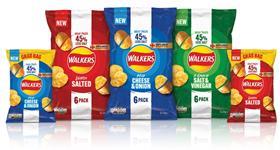
Walkers
Distinctive launches: 24
From Tomato Ketchup to American Cheeseburger, and even the outlandish Cajun Squirrel, Walkers has become well-known for its steady stream of new flavour innovation, often in limited edition or seasonal formats to test consumer feedback. Its distinctive ‘Hint of Salt’ range, first launched in 2019, was one of the launches that saw it earn top spot here.
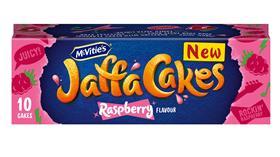
Pladis
Distinctive launches: 19
Pladis has proved it isn’t afraid to experiment when it comes to innovating across its slew of household biscuit, cake and confectionery brands, including McVitie’s, Jacob’s and Godiva. In 2021, that even meant changing up a classic with the launch of a trio of new Jaffa Cake flavours, including cherry, passionfruit and ‘Berry Cool’ blackcurrant.
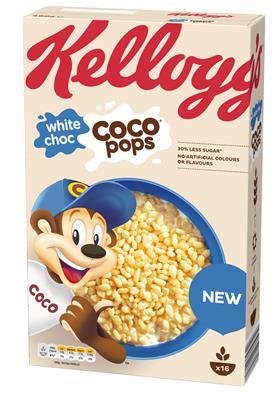
Kellogg’s
Distinctive launches: 16
The research captured Kellogg’s innovation prior to its decision to split the business in two, with distinctive launches including 2021’s Coco Pops White Choc. Both new companies – Kellanova and WK Kellogg Co – remain in the headlines for NPD, from Pringles’ new world cuisine-inspired spicy flavours to choco brownie-flavoured Krave.
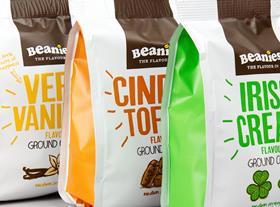
Beanies
Distinctive launches: 15
It may not be such a household name in the UK as others in this list, but since it launched in 2013, Beanies Coffee has become famous for its distinctly unusual flavours, from sticky toffee pudding to jam doughnut and chocolate orange. In fact, it now has a range of 40-plus flavours – with its compostable pods in Aldi as of 2023.
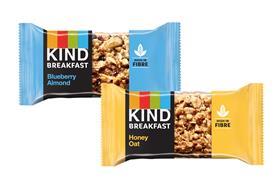
Mars
Distinctive launches: 10
Navigating HFSS requirements has been a major driver behind some of Mars’ biggest new launches in the past few years, with the expansion of its Kind snack bars and the addition of its Fruit & Nut range for Snickers and Mars. Health remains top of its agenda, with its chocolate-dipped frozen fruit brand Trü Frü making a UK debut earlier this year.






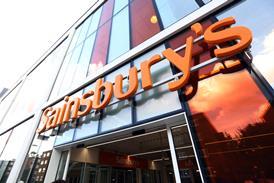
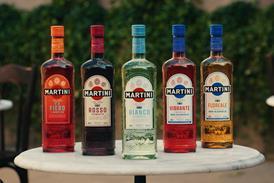
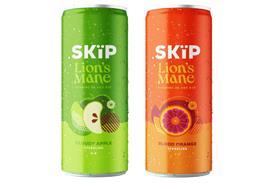


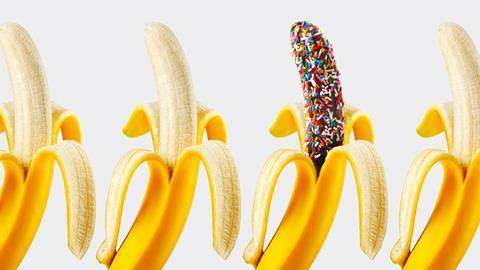



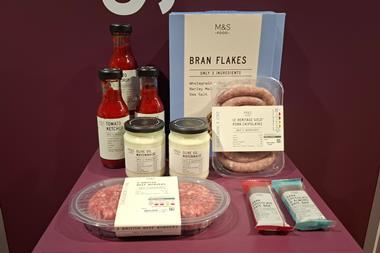
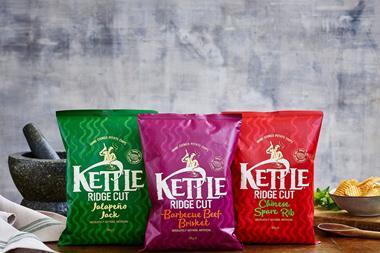

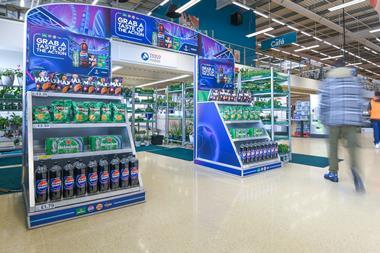





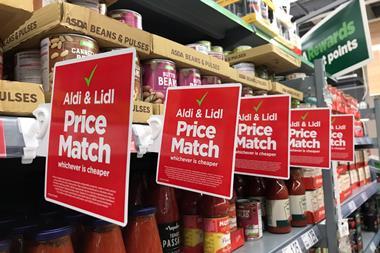
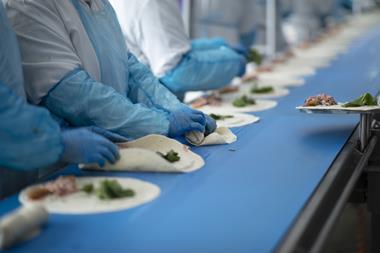
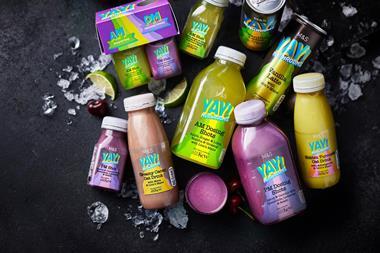
No comments yet